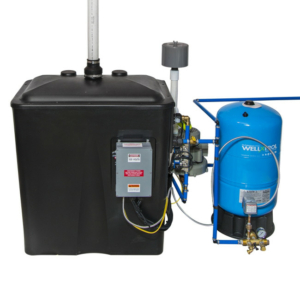Radon In Water
Radon is a gas that occurs with no color, taste, or odor. This gas is produced from the natural decomposition of the radioactive element uranium, commonly found in soil, water and rock worldwide. As such, it is found in all 50 states. However, the radon concentration varies greatly from state to state and from town to town.
No doubt, exposure to radon gas always poses a greater health risk. You may be surprised to know that radon exposure takes the life of 21,000 Americans in the form of lung cancer every year. This is why radon exposure is considered the second-leading cause of lung cancer, just behind tobacco smoking.
Unfortunately, there are still no federal regulations to determine a radon standard in drinking water. But the Connecticut Department of Public Health has already set a standard for radon level in the private well, which is set at 5,000 picocuries per liter (pCi/L). And they recommend the water departments monitor this action level constantly and keep the radon level below this level. In this article, we will discuss everything you need to know about radon in water.
How Does Radon Get into the Home?
Most of the time, radon enters a home from the earth beneath the house. When uranium decays, it produces radon gas which can enter any type of building, office, apartment, or school. The danger arises when radon can accumulate in high concentrations in indoor air. Radon gas usually makes its entrance into our homes through:
- Cracks and holes in the foundation
- Construction joints
- Cracks in wall
- Crawl spaces
Radon gas can also reach our homes through the domestic water supply system. The radon gas emitted from underground sources can quickly dissolve and accumulates in water. So, the radon gas in water can easily enter your home when it is heated or agitated during household activities like cooking, washing clothes, and showering. It is estimated only 1 pCi/L radon is released into the air from every 10,000 pCi/L of radon in water. If the main source of your domestic water supply come from a reservoir, lake, or river, you should not be too concerned about radon exposure. The radon from these exposed bodies of water will be released into the air before it makes its entrance into your home.
But this does not mean you will always receive water completely free from radon, and some radon can remain in the water. Drinking water with high concentrations of radon for a prolonged period can largely increase the risk factors for stomach cancer and other cancers. However, this risk is almost negligible when compared to the risk of lung cancer from radon present in the air.

When Should You Test Water for Radon?
If your domestic water supply system is connected to well water, you should conduct a radon water test to measure the radon level in the water. The Connecticut Department of Public Health (CT DPH) recommends every home be tested for radon in water, especially if the homes are served by well water. Besides, the CT DPH has set a regulatory standard to maintain the radon level in drinking water. The maximum contaminant level of radon in public water is set at 5,000 pCi/L.
Its important to understand that it is quite possible to experience an elevated level of radon in your water, even having a low level of radon in your indoor air. The only way to determine the radon level in your water or indoor air is to conduct a radon test.
How to Reduce the Radon Levels in Water?
From our experience, we have seen many homeowners worried over a simple question: how to reduce the radon levels in drinking water. No doubt, if your average radon test result shows the radon level in water is 5,000 pCi/L or higher, you should consider reducing the radon level. Fortunately, you can find two water treatment systems for reducing radon from water: Granular Activated Carbon (GAC) System and Aeration System.
- Granular Activated Carbon (GAC) System
There is no doubt that the Granular Activated Carbon (GAC) System is truly capable of reducing the radon level in water when the radon level is less than 10,000 pCi/L. These systems come with a fiberglass tank loaded with Granular Activated Carbon Compounds. These granular activated carbon traps the radon when water flows through. These can also capture other contaminants such as hydrogen sulfide which can produce a rotten eggs odor, chlorine, and volatile organic compounds (VOCs).
However, these contaminants will accumulate inside the fiberglass tank, eventually shortening the carbon’s life. Furthermore, the radon adsorbed can accumulate to dangerous levels and cause the system to become ineffective and/or become a source of radioactivity. This is why replacing the carbon in a GAC system at regular intervals is important.
RELATED ARTICLE:ARSENIC, URANIUM, & VOCS IN WATER
The CT DPH always recommends hiring a certified radon mitigation professional to handle the installation task.
- Aeration System
The only way to reduce radon from water when it is equal to or more than 10,000 pCi/L is to install an aeration system. These systems can aerate or absorb water so that water can release radon during the water treatment. These radon gases are eventually freed to the outside, away from your home.
Nowadays, different types of aeration systems are available on the market. So, it is important to contact an experienced radon mitigation professional to decide on the ideal aeration system for your home.

How to Find an Experienced and Qualified Radon Professional?
You can find the lists of certified radon professionals on the Radon – Professionals webpage of the CT DPH’s official website. These professionals are trained as per the EPA protocols and hold a national certification in radon measurement and radon mitigation. Don’t hesitate to visit the CT DPH Radon Program website for more information about how to test radon in water.
Final Thoughts
The two most common ways of radon exposure are through the air we breathe and the water we drink. The CT DPH recommends that every home test radon in water if the water comes from a private well. No doubt, contacting a professional is the best bet for you to conduct a radon water test and install a radon mitigation system in your home.




